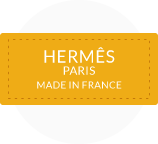The number of fake Hermès and Chanel handbags on the market is astonishing. It is estimated that up to 90% of all designer bags sold online are in fact fakes. It should come as no surprise that counterfeiters target brands such as Hermès and Chanel, due to their popularity, the high demand for their handbags, and the high prices they sell for. Many fake handbags are made with such quality that it can be difficult to spot the difference unless you know what you are looking for.
However, there is always a difference. Even the best quality counterfeit handbags come nowhere near the genuine article in terms of craftsmanship and detail. At Baghunter, we employ a team of expert authenticators with years of experience to examine each bag that comes into our hands before we send it onto a buyer. We asked our authenticators what women should look out for when checking to see if a Hermès or Chanel bag is real or fake and created this guide to act as a reference for those who are unsure.
The guide is divided into two sections – Hermès Birkin and Kelly Bags and Chanel Bags. Each brand has unique details which can help you determine if it is genuine or fake. Using this guide will help you ensure you never experience the sinking feeling of holding an expensive counterfeit bag in your arms.


















